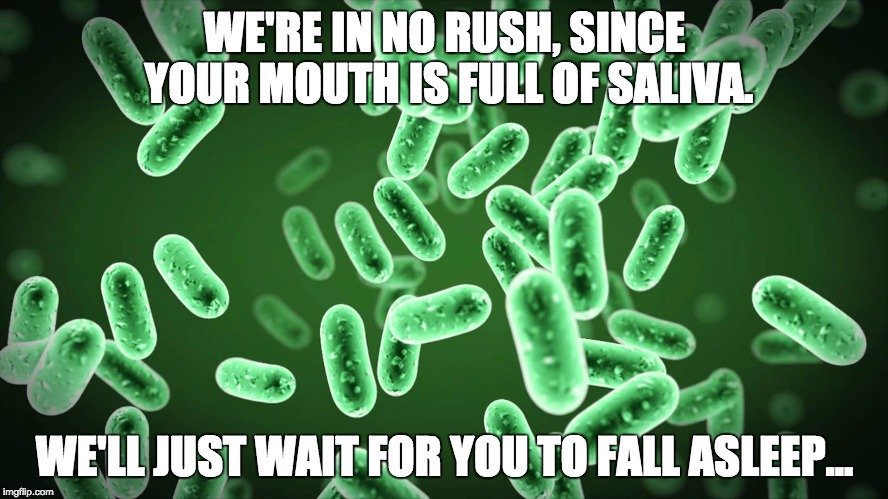Table of Contents (click to expand)
Saliva is mainly composed of water, with some other nutrients mixed in. It is produced by the salivary glands and released into the mouth, where it helps to lubricate, solubilize, protect, and digest food.
From our earliest moments in life to our dying day, there are some parts and functions of our body that will always be a part of our existence. Some are essential and obvious, like our skin, the air we breathe and the beating of our heart. However, there are also smaller constants of life that we often overlook or fail to appreciate.
One, in particular, is essential every single day, and is needed for the most fundamental process of nourishment – saliva! It may be easy to forget about saliva, but if it suddenly disappeared from your body, you would definitely notice the difference! Aside from pooling in puddles of drool on our pillow, and filling up our mouth when we smell something delicious, what is the story of saliva? What is it? Where does it come from? And why do we need it?
Short answer: Saliva is mainly composed of water, along with other nutrients, and helps us dissolve and digest food, while also protecting other parts of our mouth, gums and throat.
What Is Saliva?
As most of you probably know, the human body is composed of approximately 57-60% water, making it an incredible important part of survival. In fact, it is the foundation of human life, and without it, most people cannot survive more than 3 days. Therefore, it shouldn’t come as a big surprise that one of the body’s major fluids, saliva, is primarily composed of water – about 99%, to be a bit more precise.
However, that isn’t where the story ends, as the other 1% of saliva is incredibly important for human health, and a number of saliva’s functions. Our spit also contains mucus, electrolytes, enzymes and antibacterial compounds, as well as sodium, potassium and bicarbonate. These other elements in saliva help us do everything from protect the enamel on our teeth to strengthening the immune system and ensuring that our digestive process is efficient.
Saliva is formed and secreted from salivary glands, of which there are six (three pairs of two) major ones – the parotid, the submandibular, and the sublingual glands. The parotid glands are in the cheeks, the sublingual glands are beneath the tongue and the submandibular glands are found near the jaw, in the bottom portion of the mouth. All of these glands are controlled by the autonomous nervous system, which is in control of “automatic” actions, or things we can’t control. For example, when you look at a delicious, hot pizza coming out of the oven after a long, hungry wait, the sight, smell and anticipation of eating will cause the release of saliva from these glands.

The saliva itself is produced in acinar cells, which can come in two varieties, serous or mucous. Serous cells make slightly more watery saliva, while mucous cells, as their name implies, makes a thicker, more viscous form of saliva. Serous cells are mainly found in the parotid gland, mucous cells dominate the sublingual gland, and there is a mixture of both in the submandibular gland. The saliva moves from tiny ducts to larger ducts, eventually being released into the mouth, where it can finally go to work! All of this can happen in mere seconds, suddenly filling your mouth with saliva in the moments before that first bite!
Also Read: Why Are Tears Salty?
What Does Saliva Do?
There are four main purposes of saliva – lubrication, solubilization, oral hygiene and digestion – and while some of these may be obvious, given the timing of when saliva is typically released in the body, some of the other functions may surprise you.
In terms of lubrication, saliva is essential for wetting the food that you are eating, binding the chewed up portions into a neat, slippery package that can slide down the esophagus without scratching any of the tissues or mucosa. This is where the mucous side of saliva comes in particularly handy. Haven’t you ever wondered why eating sharp foods like tortilla chips or pretzels doesn’t scratch that narrow tube on the way down? You can thank saliva for that!
You may not be familiar with the word solubilization, but without this process, eating would be a whole lot less enjoyable. Before you can taste your food, some amount of it must be solubilized, which happens almost instantly by the saliva. Dry food molecules need to be solubilized so our sense of taste can be engaged. You can learn about the fascinating science behind taste and flavor here!
Although most of the digestive process occurs in the stomach, an important first step occurs in the mouth and esophagus, due to the other elements contained in saliva. That 1% of non-water contains an important alpha amylase, which can begin to digest starch before the food ever reaches the stomach. This can speed the digestive process, and lessen the amount of work enzymes in the stomach must do. The bicarbonate found in saliva can also help to neutralize the stomach acid, thus reducing the chances of acid-reflux symptoms.
When it comes to oral hygiene, many people completely disregard the function of saliva. However, the antibacterial compounds found in saliva can provide a constant protective shield against various pathogens and bacteria that attack the gums, teeth and throat. Lysozyme is the particular enzyme in saliva that can minimize bacterial formation in the mouth. Unfortunately, saliva production drops dramatically at night, which is why most bacterial growth in the mouth occurs while we sleep!

With all of these important functions, you can clearly see that saliva is not something we can do without. Unfortunately, some people do suffer from a lack of saliva (xerostomia) and too much saliva (hypersalivation). Frankly, I’d rather have too much than too little, but if you think you suffer from either of these conditions, you should definitely speak to a doctor.
Also Read: What Does The Uvula Even Do In The Body?
The Secrets Of Saliva
This may be surprising, but saliva has been used for nearly 2,000 years as a diagnostic tool, as even ancient medical practitioners understood that any fluid made in such large quantities by the body would likely contain clues to what was occurring internally. Over the years, doctors and researchers have learned more and more about the clues that saliva contains, and for a number of illnesses, such as diabetes, oral cancer, heart disease, sleep problems, allergies, stress, strep throat, hormone disorders and many others.
However, as technology continues to improve, saliva will eventually be able to be assayed on a nano- level, which will reveal even more biological markers that will be able to give us a nearly comprehensive picture of overall health. But until then…
In other words, next time you feel your mouth start to water, take a moment and appreciate what exactly that means for you, where it all came from, and the many beneficial things that your mouthful of spit is doing – even though you so easily take it for granted!
How well do you understand the article above!

References (click to expand)
- Tiwari, M. (2011). Science behind human saliva. Journal of Natural Science, Biology and Medicine. EManuscript Technologies.
- (1970) Preliminary observations on the presence and origin of serum .... Europe PubMed Central
- Hypersalivation: oral glycopyrronium bromide | Advice - NICE. The National Institute for Health and Care Excellence
- Malamud, D. (2011, January). Saliva as a Diagnostic Fluid. Dental Clinics of North America. Elsevier BV.
